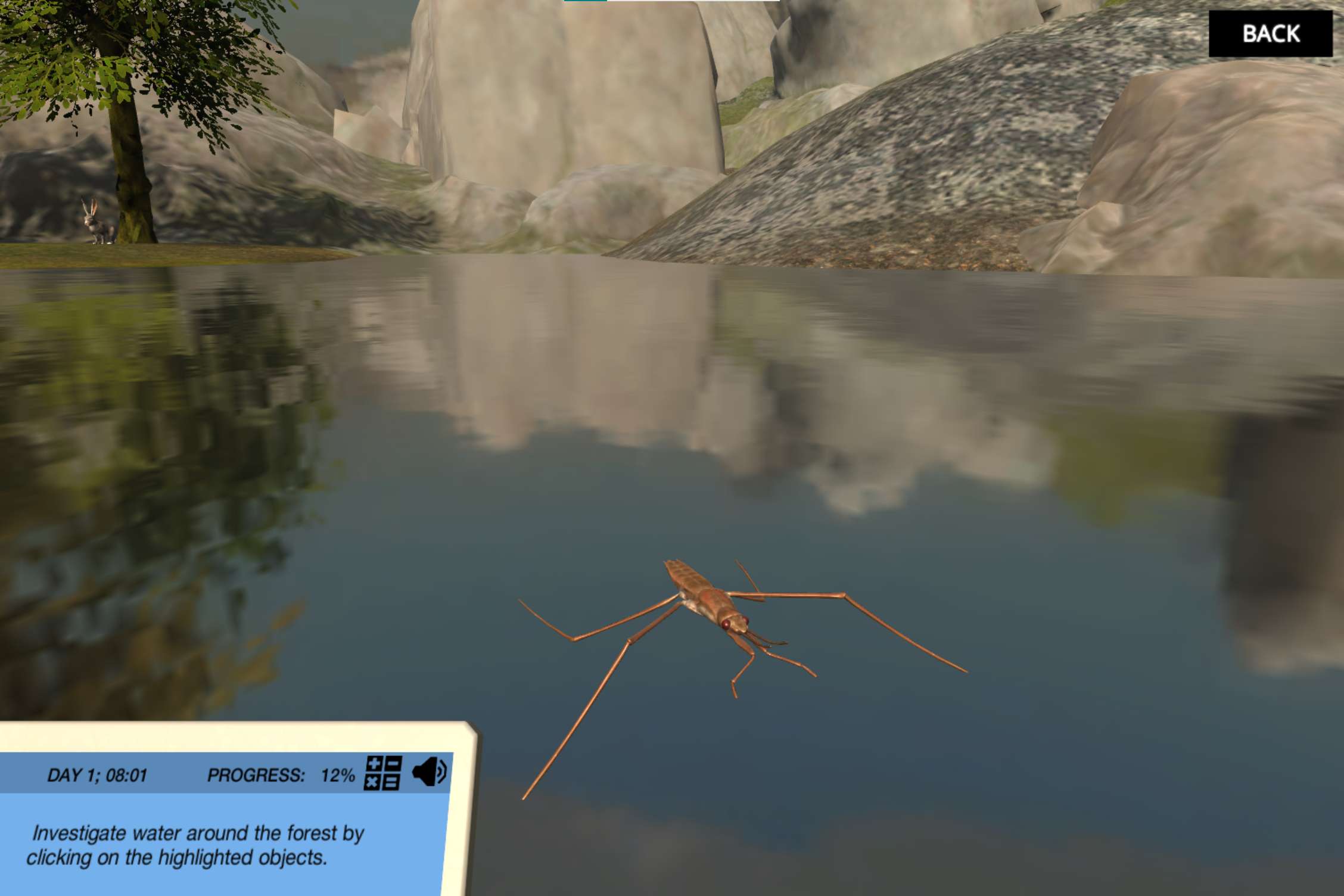Heading 1
Heading 2
Heading 3
Heading 4
Heading 5
Heading 6
Lorem ipsum dolor sit amet, consectetur adipiscing elit, sed do eiusmod tempor incididunt ut labore et dolore magna aliqua. Ut enim ad minim veniam, quis nostrud exercitation ullamco laboris nisi ut aliquip ex ea commodo consequat. Duis aute irure dolor in reprehenderit in voluptate velit esse cillum dolore eu fugiat nulla pariatur.
Block quote
Ordered list
- Item 1
- Item 2
- Item 3
Unordered list
- Item A
- Item B
- Item C
Bold text
Emphasis
Superscript
Subscript
About This Simulation
Water is essential for life, but how much do you know about how it works? In this simulation, you will build a water molecule, and figure out why it behaves the way it does. Are you ready to make a splash?
Learning Objectives
- Describe the nature and properties of water using appropriate terminology
- Relate observable phenomena of water to the molecular mechanisms that underpin them
About This Simulation
Lab Techniques
Related Standards
- PS1.A-H3
- Biology Unit 1.1
- Biology 2.2
Learn More About This Simulation
Water is all around you, and you might not even know it! You have arrived at a clearing in the forest, take a closer look at some mysterious natural phenomena. Can they be explained by the properties of water?
Piece together the fundamentals of water's polarity
Why does water behave the way it does? It’s all down to charge distribution and polarity! Build your own water molecule on the holotable, and see for yourself how the distribution of charge across the molecule isn’t quite equal. Play around with the molecules to work out how this makes them attracted to each other, and unearth how they form hydrogen bonding networks.
Find evidence of cohesion and adhesion
Once you have understood the fundamentals, it’s time to explore the forest and see if you can put some science behind your observations. Explore a spider's web, and how droplets of water will form. With your understanding of polarity you will bring to light the mechanism behind cohesion and adhesion, relating back to hydrogen bonding. Looking deeper inside the tree it is attached to, finding out how hydrogen bonding is integral to the transport of water inside the trunk.
See the impact of surface tension on insects
Have you ever noticed that small insects can walk on water without sinking? We’ll study a water strider, and try to figure out how surface tension allows it to do this.
Unfold waters solubility and thermal capacity capabilities
The fundamentals of polarity don’t just stop there. You’ll see why water is so good at making things dissolve, making it an excellent solvent. You will also discover how the sea stays so cool even when the sand is hot, due to water's high thermal capacity. So, what are you waiting for? We hope you have brought your swimming goggles.
For Science Programs Providing a Learning Advantage
Boost STEM Pass Rates
Boost Learning with Fun
75% of students show high engagement and improved grades with Labster
Discover Simulations That Match Your Syllabus
Easily bolster your learning objectives with relevant, interactive content
Place Students in the Shoes of Real Scientists
Practice a lab procedure or visualize theory through narrative-driven scenarios


FAQs
Find answers to frequently asked questions.
Heading 1
Heading 2
Heading 3
Heading 4
Heading 5
Heading 6
Lorem ipsum dolor sit amet, consectetur adipiscing elit, sed do eiusmod tempor incididunt ut labore et dolore magna aliqua. Ut enim ad minim veniam, quis nostrud exercitation ullamco laboris nisi ut aliquip ex ea commodo consequat. Duis aute irure dolor in reprehenderit in voluptate velit esse cillum dolore eu fugiat nulla pariatur.
Block quote
Ordered list
- Item 1
- Item 2
- Item 3
Unordered list
- Item A
- Item B
- Item C
Bold text
Emphasis
Superscript
Subscript
A Labster virtual lab is an interactive, multimedia assignment that students access right from their computers. Many Labster virtual labs prepare students for success in college by introducing foundational knowledge using multimedia visualizations that make it easier to understand complex concepts. Other Labster virtual labs prepare learners for careers in STEM labs by giving them realistic practice on lab techniques and procedures.
Labster’s virtual lab simulations are created by scientists and designed to maximize engagement and interactivity. Unlike watching a video or reading a textbook, Labster virtual labs are interactive. To make progress, students must think critically and solve a real-world problem. We believe that learning by doing makes STEM stick.
Yes, Labster is compatible with all major LMS (Learning Management Systems) including Blackboard, Canvas, D2L, Moodle, and many others. Students can access Labster like any other assignment. If your institution does not choose an LMS integration, students will log into Labster’s Course Manager once they have an account created. Your institution will decide which is the best access method.
Labster is available for purchase by instructors, faculty, and administrators at education institutions. Purchasing our starter package, Labster Explorer, can be done using a credit card if you are located in the USA, Canada, or Mexico. If you are outside of North America or are choosing a higher plan, please speak with a Labster sales representative. Compare plans.
Labster supports a wide range of STEM courses at the high school, college, and university level across fields in biology, chemistry, physics, and health sciences. You can identify topics for your courses by searching our Content Catalog.















